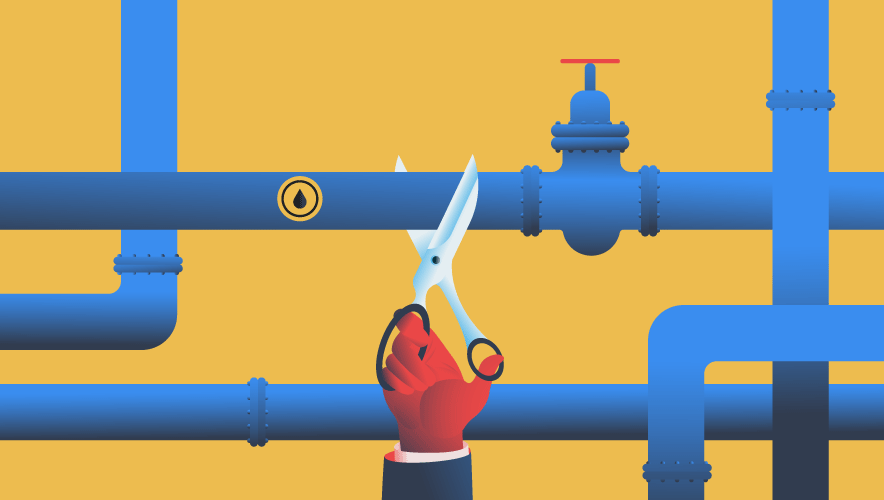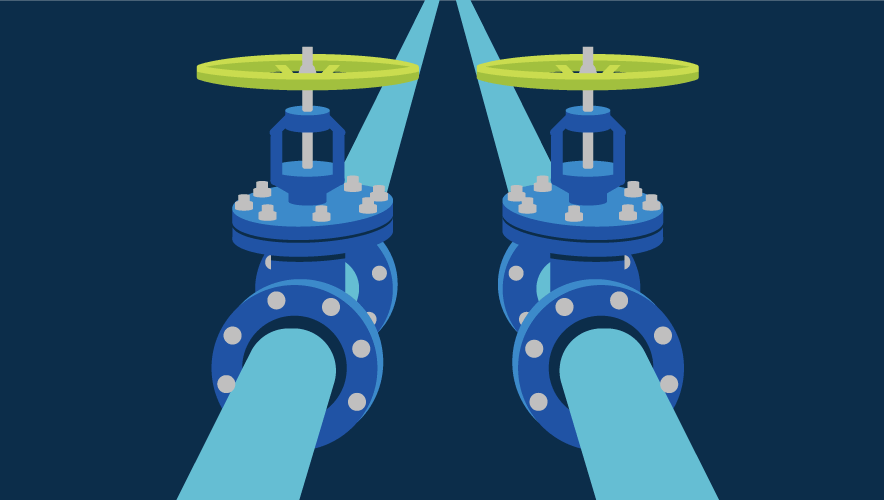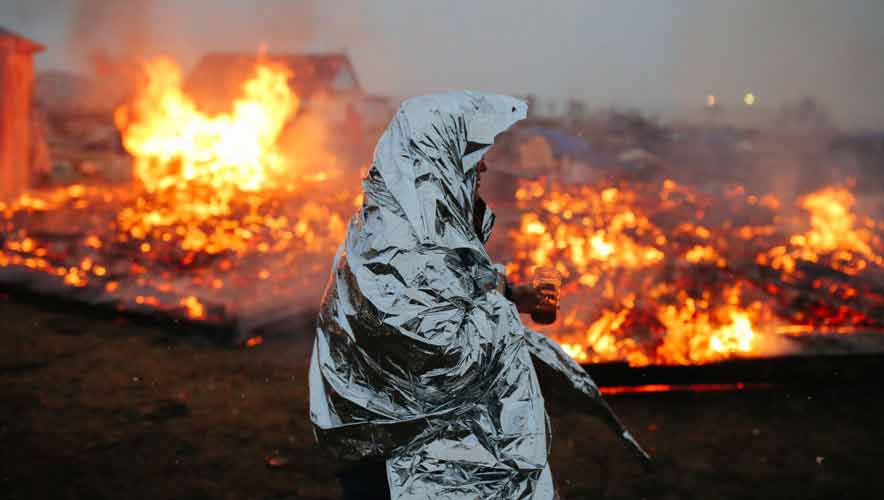Energy Geopolitics: How the War in Ukraine Hit Pipelines
On 24 February 2022, Russia invaded Ukraine, instigating a war that continues to cause destruction, death, and displacement. And the effects of that war have rippled out to other sectors of the world, including natural gas users and pipeline owners and operators.
After the start of the war, several countries promised to impose economic sanctions and cut economic relations with Russia. However, this proved to be difficult given the nation’s standing as a globally crucial producer of energy materials—including gas, oil, and valuable metals and minerals, according to data from a New York Times project that analyzed years of data on trade from the Observatory of Economic Complexity. “Between 2016 and 2020, Russia had accounted for about one-third of the EU’s and the UK’s supply of natural gas via pipeline, according to Eurostat,” the U.S. Energy Information Administration (EIA) reported.
SponsoredPipeline Security: Leveraging OSINT to Identify & Validate ThreatsProactively address threats to critical infrastructure and operations with open-source intelligence (OSINT). Validate threat actors, track online activity, and uncover intel on disruptive events. |
But the sale of goods used to keep homes warm or cool, fuel cars, and help factories stay up and running was also helping Russia keep its troops armed and fed as they sought to annex parts of eastern Ukraine.
“That has led to a frustrating reality for Western officials who had hoped to undercut Russia’s war effort by punishing its economy: The value of its exports actually grew after it invaded Ukraine,” according to the Times analysis. So, while the sanctions from Western nations attempted to impact Russia economically, the effects were limited and appeared patchwork in their deployment.
For example, European Union nations are highly dependent on Russian energy products, which may have impacted the EU sanction on energy imports. While Europe banned Russian coal in August and oil shipments via tankers in December 2022, the ban on all petroleum products will not be effective until February 2023.
These energy products are a significant source of government funding, as the Russian government is a majority owner of massive energy corporation Gazprom. (See more about the breadth of state ownership in pipeline development in a Security Management infographic here.)
“The high price of oil and gas in the last year has inflated the value of [Russian] exports, which has helped Moscow offset revenue lost because of sanctions. Gazprom…posted a record profit in the first half of this year, even as shipments to Europe began to slump,” according to the Times.
Some of that slump came from sanctions on Russian natural gas exports—for example, Germany cut its imports by half by July 2022, replacing the difference with imports from Norway and the United States.
Overall, Russian gas exports to the EU and UK declined by nearly 40 percent in the first seven months of 2022 compared to the same time period of 2021, according to data analyzed by the EIA.
Throughout the first eight months of 2022, especially as vicious heat waves and wildfires rolled through large swaths of the European continent, analysts noted that if a hard winter were to hit the continent, it could continue to impact relations between Western countries and Russia.
However, “EU countries face a much better energy picture this winter than anticipated several months ago,” said Steven Pifer, a nonresident senior fellow for Brookings. “If Europe successfully ends it import of Russian piped natural gas, that will pose a major problem for Gazprom, Russia’s large gas exporter.”
And Russia’s competitors in the energy industry are stepping up. Norway, one of the top 10 natural gas-producing nations, increased its gas production by approximately 0.14 billion cubic feet per day (Bcf/d) in March 2022, according to the EIA. Prior to 2022, Norway was the third-largest natural gas exporter in the world (after Russia and the United States), producing 11.1 Bcf/d and exporting an average of 94 percent of its annual production for the past 40 years. And while most Norwegian gas exports are delivered via pipeline, European governments also increased imports of liquefied natural gas (LNG) at large in 2022.
As gas storage levels dropped to “historically low levels from fall 2021 through spring 2022,” according to the EIA, the EU and UK increased LNG imports, hitting a record high in April 2022, with an average of 16.5 Bcf/d monthly.
And with higher spot gas prices, including for Russian dry gas, the EU and UK looked for suppliers that offered flexibility in their destinations, including suppliers from the United States and Norway. “In June 2022, Norway reopened it Hammerfest LNG facility, which could allow for an increase in natural gas exports by about 0.7 Bcf/d in 2022,” the EIA reported.
While Russia could find buyers in countries like China and Turkey—which have not levied economic sanctions on the nation—exporting dry gas supplies would take longer to figure out if the infrastructure is not already operational.
Building pipelines to carry these resources, especially significantly larger projects like the Nord Stream I and II lines, takes years, from the proposal to construction to operational stages.
“Gazprom’s gas exports move largely by pipeline, and Gazprom’s gas pipeline structure is oriented primarily toward moving gas from the western Siberian and Yamal gas fields to Europe,” Pifer said.
Russia only has one operational international pipeline—the Power of Siberia—that can deliver dry gas to China, and it cannot carry as much as the lines to the rest of Europe. In May 2022, Gazprom CEO Alexei Miller announced that the company had started designing a second gas pipeline to China, which would deliver 50 billion cubic meters (Bcm) per year to Chinese consumers, according to bne IntelliNews. The Power of Siberia pipeline is not expected to reach its capacity of 38 Bcm per year until 2025, and this second pipeline project is not anticipated to be operational until at least 2030.
And while the economic sanctions and orders to scale back imports of Russian gas are impacting gas flows and their associated organizations, physical damage has also contributed to tensions between countries.
In September 2022, various European geologists reported two seismic events that were characteristic of underwater explosions along the Nord Stream 1 and 2 lines—which run from northwestern Russia and through the Baltic Sea to Finland and Estonia, respectively. The explosions, which were approximately 17 hours apart, resulted in multiple underwater gas leaks and rendered three of the lines inoperable.
The Nord Stream pipelines are one of three major pipeline corridors that export gas to the EU and UK. The other lines saw decreased flows earlier in 2022. Part of the decreases were due to a gas compressor station that was taken offline—it was located in Ukraine.
An investigation into the Nord Stream incident, led by Swedish prosecutor Mats Ljungqvist, determined that the explosions were the result of sabotage and that explosive residue was found. So far, speculations vary on who was responsible for the attack.
Even prior to the explosions, Western nations claimed Russia was using the Nord Stream 2 pipeline and other gas lines as a way to apply political pressure with the threat of limiting energy resources or in retaliation for the imposed sanctions.
Although the damage to the pipelines did not immediately impact European customers, given the already-decreased flows to EU and UK users, as well as their shift to other gas sellers, European authorities who allege that Russia was behind the explosions “suggested that their critical infrastructure could be vulnerable if they continued their support of Ukraine,” The Washington Post reported.
Russian authorities, including President Vladimir Putin, have blamed the United States or other Western nations for the explosions. No evidence was offered to support the claims, although the accusations allege that Western countries would stand to profit from such an attack, according to the Pipeline & Gas Journal.
“The pipeline incident has prompted European countries to step up vigilance over other critical infrastructure, which looks suddenly much more vulnerable….Norway, a major Russian rival on gas supplies, will deploy its military to protect oil and gas installations against possible sabotage after warnings of unidentified drone sightings in September. Britain, France, and Germany will also help,” Pipeline & Gas reported. Naval surveillance on lines along Italy, Denmark, and Poland were increased, as well as land-based pipelines in various European nations.
Sara Mosqueda is associate editor for Security Management. Connect with her on LinkedIn.










